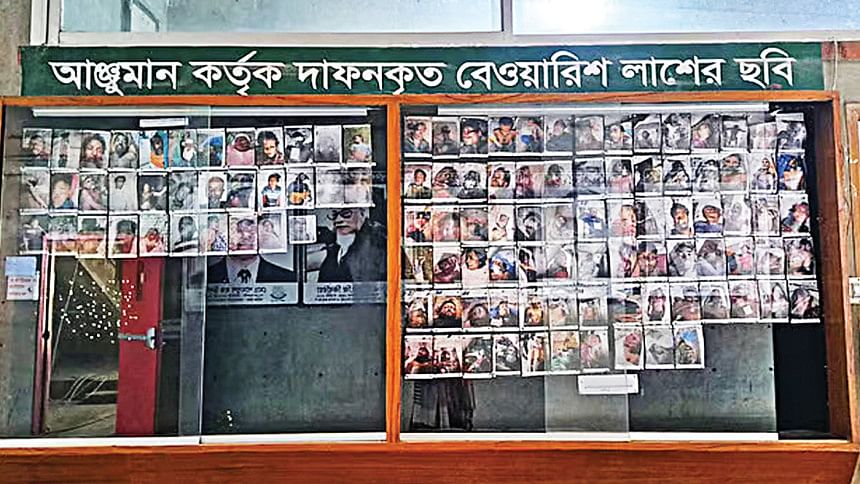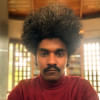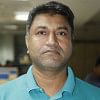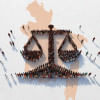AL govt sought to hide true extent of massacre

Seven months after the July uprising in Bangladesh, many protesters still remain missing. We investigated 31 cases: six were buried as unclaimed bodies at Rayerbazar graveyard; four were identified by families from among the charred bodies in Ashulia; two were handed over to families after DNA testing; and 19 are still unaccounted for. We found evidence of systematic government efforts to cover up medical records and bodies of the victims so they can never be found again. This four-part series also documents how families were denied time to collect the corpses from hospital morgues, and how they are now waiting for the bodies of their loved ones.
They all had families, desperately searching for them amid a nationwide curfew and internet shutdown at the height of the July uprising. Yet, they were buried as "unclaimed" bodies within one to six days after being shot dead, before their loved ones could find them. Seven months after the July killings, these families do not know where their kin rest.
An investigation by The Daily Star indicates that the hasty burials of the victims were part of a systematic effort by the fallen Awami League government to conceal the true extent of the massacre.
In some cases, medical records were tampered with and standard protocols for handling unclaimed bodies were bypassed. In other cases, the police quickly disposed of the bodies even though hospital morgues had the capacity to keep them longer, according to documents and morgue sources.
For example, Dhaka Medical College Hospital has two morgues with a combined capacity to hold around 100 bodies.
Before July 15, when killings of the protesters had not yet begun, there were 28 bodies in its mortuaries, said Ramu Chandra Das, a morgue assistant.
Yet, general diaries from Shahbagh police and registers at DMCH morgue and Anjuman Mufidul Islam, a burial service, show that eight protesters were buried on July 24 as "unclaimed" bodies in Rayerbazar graveyard within one to six days of their deaths.
These eight bodies include Sohel Rana, Md Assadullah, Faisal Sarker and Rafiqul Islam, who were killed by gunshots (Read their story in Part 1 of this series). The identities of the rest four remain unknown.
Asked why they got rid of these bodies so fast, Ramu said, "It was done on police instructions. We could have kept the bodies longer."

Typically, DMCH reports about unclaimed bodies to police about a week after the bodies are brought to the hospital. Upon completion of various official processes, including autopsies, burial of such corpses takes about a month or even more.
"We could've kept the body longer; there were ample empty freezers. But the police took away the body."
"We usually keep unclaimed bodies for at least a week in the morgue. Many bodies are also kept for months or even years," Ramu said.
Documentary evidence also suggests that DMCH does keep unclaimed bodies longer.
For instance, on July 8, 2024, a week before state forces began to kill protesters, Anjuman Mufidul sent seven bodies, all from DMCH, to Rayerbazar for burial. Records show they died between June 12 and July 4. This means, before these bodies were sent to Anjuman, six of the bodies were kept at mortuaries for about three weeks or more.
In contrast, Anjuman received eight bodies on July 24, by which time the number of corpses at hospitals was rising every day. Records show that four of these eight died just the previous day, and the four others the day before.
This suggests a systematic effort to erase evidence and prevent families from finding their loved ones.
According to the eight general diaries filed by Sub-inspector Jabbar from Shahbagh Police Station in relation to these bodies, six were from Jatrabari, and two from Uttara. All died from gunshot wounds, the GDs show.
Usually, Anjuman receives unclaimed bodies from hospitals after autopsies in the presence of police officers who facilitate the process. Before the handover of the bodies, representatives from Anjuman and a police officer are required to sign the morgue register.
"I just followed orders from Shahbagh's then officer-in-charge Mostajizur Rahman."
However, this protocol was not followed in the case of at least nine bodies connected to the uprising.
Sub-inspector Salahuddin of Shahbagh police collected eight of these bodies from Dhaka Medical, and Sub-inspector Shakil Joarder of Sher-e-Bangla Nagar police collected another body from Suhrawardy Medical.
In both instances, Anjuman received the bodies from the respective police stations rather than directly from the hospitals, documents show.
Asked why he rushed the burial of these individuals, Shahbagh police Constable Salauddin said he just followed orders from Shahbagh's then officer-in-charge Mostajizur Rahman. Two other police officers gave a similar version. Mostajizur could not be reached for comments.
Both the DMCH authorities and Salauddin claimed that no other bodies related to the protests were sent to Anjuman.
Medical Records Tampered
Apart from DMCH, two other hospitals in Dhaka store unclaimed bodies—Shaheed Suhrawardy Medical College and Sir Salimullah Medical College (Mitford Hospital).
Both hospitals claim they haven't dealt with any protest-related unclaimed bodies.
Our findings about Suhrawardy Medical contradict this. (We did not investigate Mitford hospital's claim.)
Mahin Mia, one of the six confirmed by The Daily Star to have been buried at Rayerbazar as unclaimed bodies, protested on July 19 at Mohammadpur's Town Hall with his brother, Abdul Jabbar. Jabbar returned home, but Mahin did not.
Jabbar later found Mahin's picture among the deceased on Anjuman's "wall of the dead".
Mahin's wife gave birth to their first child 15 days after he disappeared.
The Daily Star found Mahin's autopsy report (autopsy # 679/24) from Suhrawardy Medical College. The report describes him as "unidentified" and says he was found on July 19, the day he went missing, with bullet wounds on both sides of his head.
His family later confirmed his identity from the photo on the autopsy report.
Suhrawardy Medical's morgue records show that Mahin's autopsy was done on July 20, and his body was handed over to Sher-e-Bangla police Sub-inspector Shakil Joarder two days later.
"We could've kept the body longer; there were ample empty freezers. But the police took away the body," says Jatan Kumar, a morgue assistant at the hospital.
SI Shakil told The Daily Star that he only handed over the body to Suhrawardy morgue, but did not collect it from there to send it for burial. However, the morgue register bears his name on two dates in relation to Mahin's body: on July 19, the day he handed over the body to Suhrawardy morgue for an autopsy, and on July 22, the day he collected it for burial. The Daily Star contacted him on the very mobile number recorded in the morgue register.
Despite such hard evidence, the Suhrawardy morgue authorities claim they did not deal with any unnamed bodies.
Apart from Mahin, eight other unclaimed bodies from Suhrawardy, with dates of death from July 17-23, were buried at Rayerbazar from July 22-27. Of them, five were aged between 23 and 35, according to the cemetery register.
At least some of these bodies are likely connected to the uprising, although we could not verify it as we could not collect their autopsy reports and other relevant documents.
Dhaka Medical's claim that only eight uprising victims were sent to Anjuman is also questionable.
For example, Ahmed Jilani was killed on August 3. His autopsy was conducted on August 13 at DMCH, and he was buried at Rayerbazar on August 31. The autopsy report shows he had gunshot and stab wounds on the back of his head.
Based on the autopsy numbers of the other eight bodies and Jilani, The Daily Star can confirm that Jilani is not on the DMCH list of the eight unnamed bodies buried at Rayerbazar.
Our suspicion that medical and burial records were tampered with to conceal the true extent of the massacre aligns with the UN fact-finding report.
The report, published last month, mentions that state agencies confiscated medical records and CCTV footage in many hospitals, without due process, and medical staff were pressured to withhold proper medical documentation.
In some hospitals, deaths from gunshot wounds were recorded as "accidental" under threat of legal action. From July 18 onwards, autopsies were often delayed or not conducted at all, violating national and international standards, the report adds.
[Read Part 3 tomorrow on how state agencies sought to cover up bodies, and how families were denied time to find their loved ones.]



 For all latest news, follow The Daily Star's Google News channel.
For all latest news, follow The Daily Star's Google News channel. 








Comments